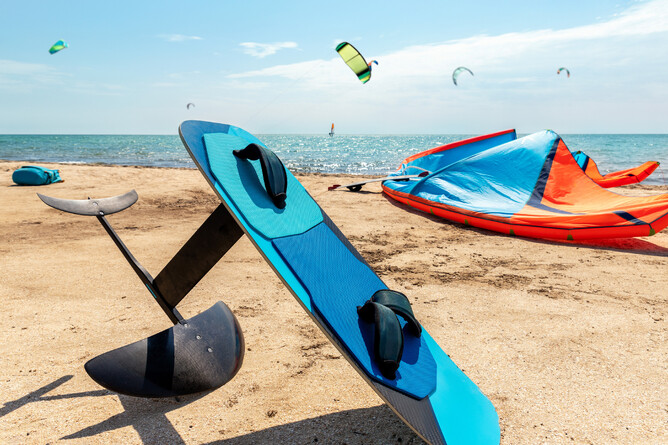Forget about the mundane task of selecting socks in the morning; choosing the right foil is where the real excitement lies. It's a blend of your previous surfing or kiteboarding experience, science, and a sprinkle of gut feeling—and, of course, a little guidance from those who've ridden the waves and faced the winds.
You might think picking a foil is as straightforward as choosing your favourite colour, but there's a bit more to it than meets the eye. It's easy to feel like a fish out of water in this ocean of options. But don’t worry because we're here to navigate these waters together. From understanding the delicate dance between size and stability to deciphering the cryptic language of materials and build quality, we've got you covered.
What's the Big Deal about Foiling Anyway?
Foiling, whether surf or kite, isn't just another way to make a splash. It's a revolution on water, broadening the range of ridable conditions. A surf foil lifts you above the wave, letting you glide like magic on the energy of the moving water. Wave conditions you would never normally surf become a playground for surf foiling. A kite foil partners with the wind for an unbeatable rush. It’s not just about riding; it’s about flying above the water in winds lighter and more fickle than you would ever normally ride. And yes, it’s as awesome as it sounds.
The Golden Rule of Foiling
The suitable foil can make or break your experience. Think of it like choosing a dance partner. You want someone who compliments your moves, not steps on your toes. Similarly, your foil should match your skill level and style, not leave you floundering.
Your Foil, Your Choice: Factors to Consider
1. Experience Level
You wouldn't jump into a Formula 1 car for your first driving lesson, right? The same goes for foiling in New Zealand. First up; beginners surf or kite foilers must have a reasonably confident set of skills at surfing or kiteboarding prior to starting foiling. Look for larger surface area, more stable design foils that will forgive your rookie mistakes. Foiling is a journey and takes some time to master the skills. We recommend starting on equipment that is easy and fun, foil lots, gain skill, and upgrade your equipment along the way. There are plenty of options for something faster, carvier or better to pump when your ready.
2. Foil Type
Surf foils and kite foils are like cousins—similar but having design and size differences. Surf foils are all about wave-riding, carving, gliding, and pumping to link multiple waves. Kite foils excel in harnessing low wind power for glide, speed, and incredible upwind performance. The range of foil types is extensive but easy enough.
3. Size and Volume
Size matters here, folks. Larger foils offer stability for beginners, while smaller ones provide speed, glide and pump or agility for the pros. It's about finding that sweet spot where you feel in control yet challenged.
4. Material Matters
Carbon fiber, fiberglass composite or aluminum? Carbon foils are lighter, stiffer and more responsive but hit the wallet harder. On the other hand, fiberglass composite and aluminum foils are more budget-friendly and durable, albeit heavier.
The Assault Boardriding Centre Secret Sauce
New Zealand is a surf foiler’s and kite foiler’s dream with endless opportunities to ride. Use the above information as a brief guide and let us assist with your equipment decisions. Always consider local conditions, be safe and ride with etiquette (respect for other water users).
